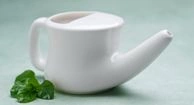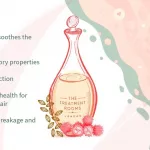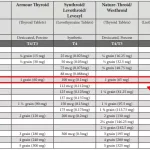Anyone who’s ever tumbled into choppy surf knows there’s nothing quite like cold seawater rushing through your nose. While at first jarring, that forced flushing can sometimes bring surprising — and welcome — relief from blocked sinuses.
It’s possible that such experiences inspired the creation of the neti pot in ancient India. People have employed neti pots and other forms of intentional nasal flushing for generations to ease the irritating symptoms of allergies.
Some of the most troublesome manifestations of nasal allergies, or allergic rhinitis, include excess mucus, nasal congestion, runny nose, and inflamed nasal passages and sinuses.
In certain cases, allergy sufferers may go on to develop chronic rhinosinusitis — a persistent inflammatory condition marked by irritated or even infected sinus cavities.
Continue reading to learn more about nasal irrigation and whether it might help with your allergy symptoms.
Ancient origins
Centuries ago, practitioners of Ayurveda, the traditional medicinal system of India, popularized the practice of rinsing nasal passages with warm saline to clear away mucus, pollen, and other debris.
Also called nasal douche or nasal lavage, nasal irrigation requires just two basic components: salt water and a neti pot. A neti pot is a small vessel designed to channel a stream of saline into one nostril so it exits through the other. People typically perform the rinse one to four times a day — without needing to enter the ocean.

Advocates say the method can provide meaningful relief from congestion and nasal irritation.
They also suggest it may help reduce headache symptoms tied to sinus pressure and lower reliance on antibiotics for sinus infections. It can lessen the need for nasal corticosteroid sprays used to control allergic nasal inflammation.
Many users report feeling more in control of their allergies and say nasal irrigation significantly improves their daily comfort and quality of life.
Researchers have run numerous clinical trials on nasal irrigation, and most conclude it’s safe and generally well tolerated. The main downside is that the procedure can be awkward and requires more effort than simply taking medicines.
At its best, nasal irrigation can yield marked improvements across a variety of allergy symptoms.
A study at the University of California San Diego evaluated more than 200 individuals who used nasal irrigation. Participants showed “statistically significant improvements” in 23 out of 30 symptoms and reported higher subjective quality-of-life scores.
A 2009 review concluded that saline nasal irrigation is safe and effective for people with several conditions, including:
- chronic rhinosinusitis
- viral upper respiratory infections
- allergic rhinitis
Warnings and precautions
There are a few important caveats to keep in mind.
Not for infants
Nasal irrigation should not be performed on infants.
Avoid routine use
Frequent, regular use of nasal irrigation might actually raise your risk of sinus infection. Occasional use appears safe, but making it a daily habit could strip away protective elements of the mucus membranes that line your nasal passages and sinuses.
Use only sterile water
One final caution: always prepare the irrigation solution with sterile water. Boiling water before use is generally sufficient.
The Centers for Disease Control and Prevention reports that a free-living amoeba, Naegleria fowleri, has been associated with several deaths among neti pot users who did not use sterile water. Once the organism enters the sinuses, it can travel to the brain and cause a usually fatal infection.
How to perform nasal irrigation
A neti pot resembles a small teapot. To use one:
- Mix warm sterile water with pure salt in the pot before beginning.
- Place the spout into the upper nostril while tilting your head slightly to the side.
- Allow the saline to flow out through the lower nostril.
As mentioned, using sterile water is essential. Prepare a saline solution by dissolving the correct amount of pure, noniodized sodium chloride into the water to make one of two concentrations:
- Isotonic. A 0.9 percent saline solution — about 9 grams of sodium chloride per liter of water.
- Hypertonic. A stronger 1.5 to 3 percent salt solution.
Kosher or sea salt are acceptable sources of pure sodium chloride without added minerals. The New York Sinus Center advises against using table salt or iodized salt.
Do not use tap water for nasal irrigation. Sterile water is required for safety, and adding salt prevents the stinging sensation that occurs with non-isotonic solutions.
Isotonic solutions contain enough dissolved particles to match the solute concentration of blood. Seawater is effectively a hypertonic mixture of salt and water, but you should never intentionally use seawater for nasal rinsing — it can introduce contaminants and increase risk.
Conclusion
Neti pots offer a natural, effective way to ease nasal congestion and allergy symptoms when used correctly — with sterile water and infrequently. They have been part of Ayurvedic practice for centuries. If you have concerns about nasal irrigation, check with your healthcare provider.


















Leave a Reply
You must be logged in to post a comment.